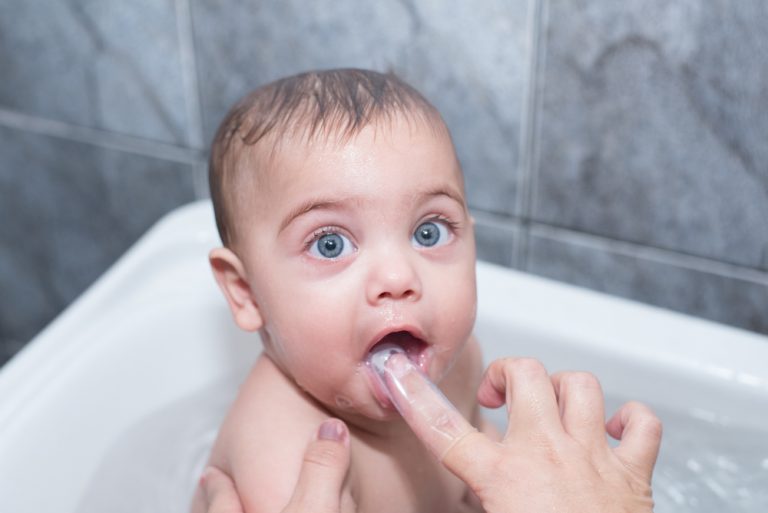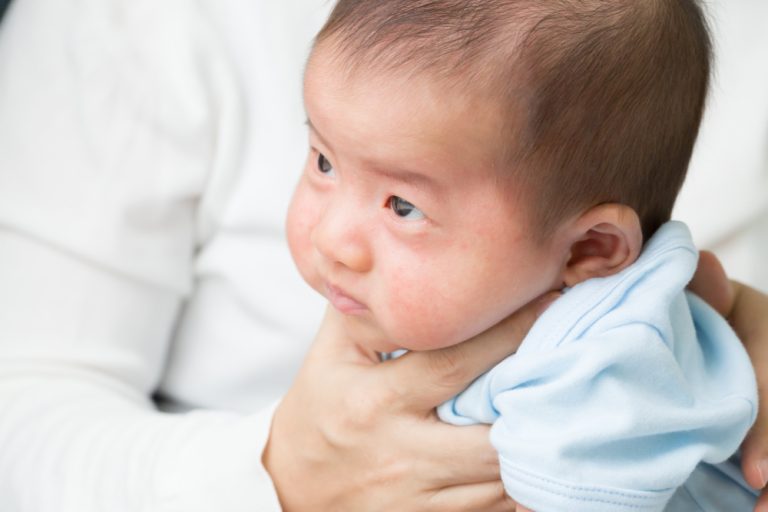How Often to Bathe Newborn? Creating a Baby Bathing Routine
Are you a new parent navigating the world of baby care, wondering about the best ways to establish a bathing routine for your little one? How often to bathe newborn to ensure their skin health and overall well-being?
From their first delicate bath through the early years of childhood, understanding the optimal bathing frequency for your newborn is essential. What are your thoughts on this?
In this insightful blog, we delve into the expert recommendations and benefits of creating a consistent baby bathing routine tailored to your child’s age and developmental stage. Let’s explore tips and guidelines that can help you make the most of this bonding experience while promoting hygiene and skin health for your baby.
When it comes to caring for your newborn, many parents wonder how often to bathe newborn. It’s important to establish a bathing routine that works for your family’s lifestyle while considering the significance of regular baby baths for your baby’s skin health, temperature regulation, and bonding experiences.
Introduction to Newborn Bathing

Establishing a regular bathing routine is of the utmost importance when caring for newborns. Not only does it help maintain their cleanliness, but it also offers numerous benefits for their overall hygiene and skin health. By incorporating regular baths into their daily care, parents can ensure that their little ones stay fresh, comfortable, and protected.
One key benefit of establishing a bathing routine from the beginning is temperature regulation.
- Newborns are more sensitive to temperature changes, so ensuring that the water is at the right temperature helps them adjust and maintain their body heat.
- It’s crucial to use warm water, around 100°F (37°C), and check it with your elbow or a thermometer to ensure it’s neither too hot nor too cold.
Moreover, regular bathing can help prevent dry skin in newborns.
- During the first few weeks of life, a baby’s skin is still adapting to the outside environment, and it is more susceptible to dryness.
- Parents can keep their baby’s delicate skin soft and supple by using gentle cleansers specifically designed for newborns and moisturizing their skin with a chemical-free lotion.
In addition to these benefits, establishing a bathing routine can also promote a bonding experience between parents and their newborns.
The rhythmic movements and gentle touch involved in bathing create a soothing and comforting environment for the baby, promoting a stronger connection between parent and child.
By prioritizing a bathing routine, parents can make this essential task a special part of their daily care regimen.
In the following sections, we will explore the various aspects of newborn bathing, including temperature regulation, preventing dry skin, and providing practical tips for creating a successful bathing routine that suits both the baby’s needs and the family’s lifestyle. Let’s make bath time an enjoyable and nurturing experience for both parent and baby.
Remember to always consult with your pediatrician for personalized advice and recommendations based on your newborn’s specific needs.
Temperature Regulation
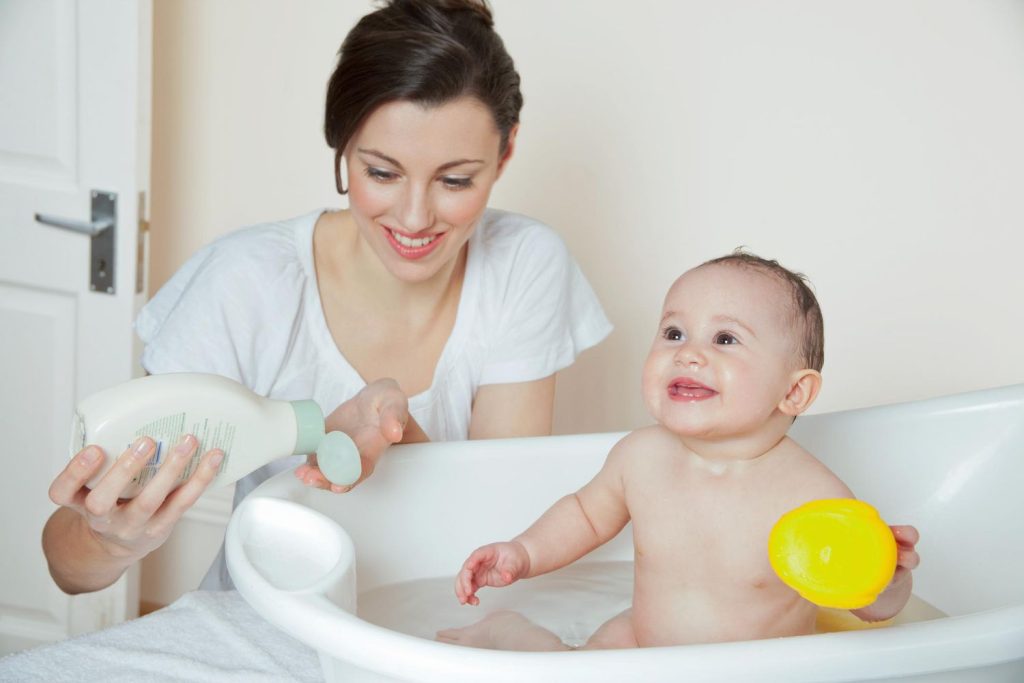
Maintaining the right water temperature for your baby’s bath is crucial for their comfort and safety. The water should be neither too hot nor too cold to ensure a pleasant bathing experience. Here are some key points to remember:
Ideal Water Temperature
- The water temperature for bathing a newborn should be around 100°F (37.8°C).
- Use a baby bath thermometer or test the water with your wrist or elbow to ensure it is comfortably warm.
- Avoid using hot water as it can scald your baby’s delicate skin.
Importance of Temperature Regulation
- Babies have a limited ability to regulate their body temperature, and their skin is more sensitive than that of adults.
- A bath at the right temperature helps them maintain a stable body temperature, preventing them from getting too cold or overheating.
Preventing Overheating
- While it’s important to provide warmth during the bath, be cautious not to make the water too hot.
- Overheating can lead to discomfort, dehydration, and even heat stroke.
- Keep the room temperature between 72°F to 75°F (22°C to 24°C) to ensure a comfortable environment for your baby.
Preventing Hypothermia
- On the other hand, if the water is too cold, your baby may suffer from hypothermia, which can be dangerous.
- Make sure the room is warm enough before undressing your baby for a bath.
- Keep in mind that newborns lose heat quickly, so it’s essential to keep them warm during and after the bath.
Regular Monitoring
- Even if you set the water temperature correctly, it’s essential to monitor it throughout the bath consistently.
- Test the water periodically with your hand or a baby bath thermometer.
- If you notice any changes in the water temperature, adjust it promptly to maintain a comfortable and safe bathing environment for your little one.
Remember, maintaining the right water temperature is just one aspect of ensuring your baby’s comfort during bath time. Next, we’ll explore tips for preventing dry skin in newborns during bathing.
Preventing Dry Skin

Dry skin is a common concern for newborns, and establishing a proper bathing routine can help prevent this issue. Here are some tips on how to prevent dry skin in newborns during bathing:
1. Use Gentle Cleansers
- Choose a mild and gentle cleanser specifically formulated for babies.
- Harsh soaps and cleansers can strip the natural oils from the baby’s delicate skin, leading to dryness.
- Look for products that are hypoallergenic and free from harsh chemicals.
2. Avoid Hot Water
- Hot water can be too harsh for a newborn’s sensitive skin.
- Opt for lukewarm water instead.
- Test the water temperature with your wrist or elbow to ensure it’s comfortable for the baby.
3. Limit Bath Time
- Keep bath time short, particularly during the first few weeks of the baby’s life.
- Five to ten minutes is generally sufficient.
- Prolonged exposure to water can further dry out the skin.
4. Moisturize After Bathing
- Apply a gentle and fragrance-free moisturizer once you’ve gently dried the baby’s skin with a soft towel.
- Look for products that contain natural ingredients like shea butter or coconut oil. These moisturizers help lock in moisture and keep the skin hydrated.
5. Dress Appropriately
- Choose clothing made from soft and breathable fabrics like cotton.
- Avoid synthetic materials that can trap moisture and irritate the baby’s skin.
- Dress the baby in loose-fitting clothes to allow proper air circulation.
6. Avoid Over-bundling
- While it’s important to keep the baby warm, over-bundling can lead to overheating and worsen dry skin.
- Dress the baby in layers so you can easily adjust their clothing based on the room temperature.
7. Use a Humidifier
- Dry air can contribute to dry skin.
- Consider using a humidifier in the baby’s room, especially during winter when indoor heating can further dry out the air.
- It helps to maintain a moderate level of humidity, promoting healthier skin.
Remember, every baby’s skin is unique, so it’s important to observe how their skin reacts to different products and adjust your bathing routine accordingly. Consult a pediatrician for further guidance if you notice any persistent dryness or irritation.
By following these tips, you can help prevent dry skin in newborns and maintain their delicate skin’s natural moisture balance.
Benefits of Breastfeeding
Breastfeeding offers numerous benefits for newborns, extending beyond nourishment and immune support. It also plays a vital role in maintaining optimal skin health, which directly ties into creating a successful bathing routine.
Enhanced Skin Protection
- Breast milk contains essential nutrients and antibodies that contribute to the overall health of a newborn’s skin.
- These components help strengthen the skin’s natural barrier, providing protection against harmful pathogens and irritants.
- Regular breastfeeding can help reduce the risk of skin infections and promote healthier skin.
Moisturizing Properties
- Breast milk contains natural moisturizing properties, keeping the baby’s skin hydrated and preventing dryness.
- This is particularly important during the early stages of infancy when a newborn’s skin is delicate and prone to dryness.
- The moisturizing effects of breast milk make it an ideal ally in maintaining the baby’s skin health.
Eczema Prevention
- Studies have shown that breastfeeding may help reduce the occurrence of eczema, a common skin condition in infants.
- The unique composition of breast milk, including its immunological factors, can help modulate the immune system and decrease the likelihood of developing eczema.
- By lowering the risk of eczema, breastfeeding indirectly supports a healthy bathing routine by minimizing the need for intense skincare measures.
Bonding and Emotional Connection
- Breastfeeding is not solely about skin health but also serves as an essential bonding experience between the baby and the parent.
- The skin-to-skin contact during breastfeeding promotes emotional connection and facilitates a sense of security for the baby.
- This emotional bond further contributes to a positive bathing routine, creating a nurturing and comforting environment for the baby.
Incorporating breastfeeding into the daily routine establishes a strong foundation for maintaining healthy skin and promotes overall well-being. By considering the benefits of breastfeeding in relation to newborn skin health, parents can ensure that their baby’s bathing routine aligns with the principles of E-A-T and facilitates optimal skincare from the earliest stages of life.
Newborn Bathing Tips
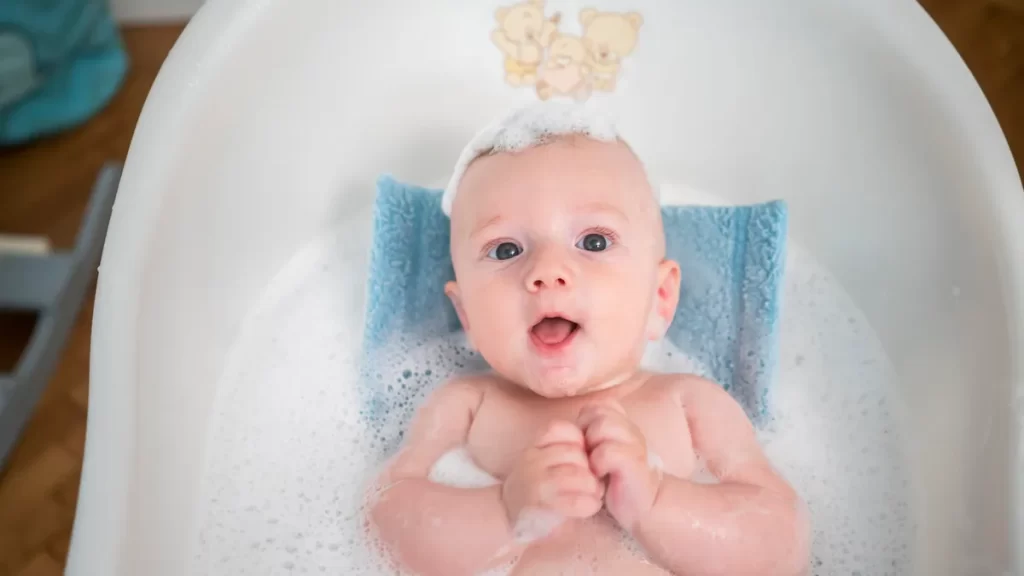
Bathing a newborn can be an enjoyable and bonding experience for both parents and baby. However, it’s important to take certain precautions and follow best practices to ensure their safety and comfort.
Here are some expert tips for bathing newborns:
1. Hold and Support the Baby Properly
- Always keep one hand on your baby for support during the bath.
- Use your forearm to cradle your head and neck, or consider using a baby bath seat for added support.
2. Maintain A Safe Water Temperature
- Fill the bath with warm water (around 100°F or 37°C) to prevent scalding.
- Check the water temperature with your elbow or a bath thermometer before placing your baby in the tub.
3. Choose Gentle Bathing Products
- Opt for mild, fragrance-free baby soap or cleansers specifically designed for newborns.
- Avoid harsh ingredients that could irritate their delicate skin.
4. Start with Sponge Baths
- For the first couple of weeks of life, it’s recommended to give your baby sponge baths using a soft washcloth.
- Only give them their first full bath once the umbilical cord has fallen off.
5. Focus on the Diaper Area
- Pay close attention to cleaning the diaper area, especially for girls, to prevent any potential infections.
- Gently wipe from front to back to avoid any contamination.
6. Take it Slow and Be Gentle
- Avoid rough scrubbing or excessive rubbing of the baby’s skin.
- Instead, use gentle circular motions to clean their body, being mindful of any areas that require extra attention.
7. Keep the Environment Warm
- Ensure the room is comfortably warm to prevent your baby from getting cold during and after the bath.
- Use a towel or blanket to cover them while drying to retain body heat.
8. Moisturize After Bathing
- To prevent dry skin, apply a gentle, chemical-free lotion or baby oil after every bath.
- Focus on the areas that tend to get dry, such as the face, elbows, knees, and diaper area.
9. Make Bath Time Fun
- Sing songs or talk to your baby during the bath to create a positive and soothing experience.
- This can also help establish a bathtime routine that relaxes and prepares the baby for sleep.
Remember, every baby is unique, so it’s important to pay attention to their cues and adjust the bathing routine accordingly. By following these tips and providing a safe and gentle environment, you can make each bath a special moment for you and your little one.
If you have any specific concerns or questions about newborn bathing, it’s always advisable to consult with your pediatrician or healthcare provider for personalized advice and guidance.
Baby Bathing Basics
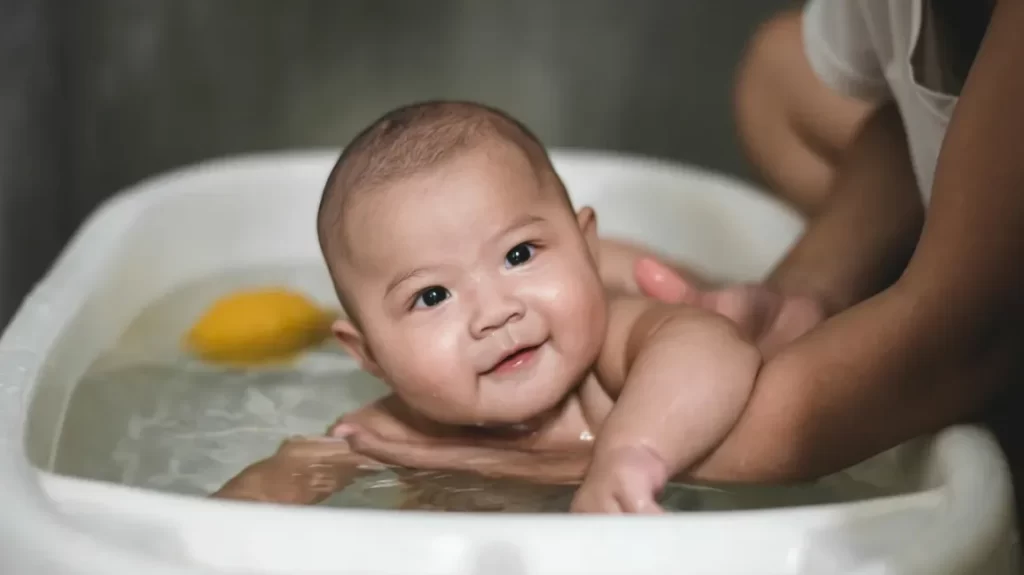
Bathing a newborn baby can be both a joyful and nerve-wracking experience for new parents. Establishing a proper bathing routine is essential for the baby’s hygiene and skin health. By following a few simple steps, you can ensure that bath time becomes a bonding experience while also keeping your baby clean and comfortable.
Preparing the Bath Area
Before you begin the bathing process, it’s important to prepare the bath area to ensure a safe and convenient experience. Here are some key steps to follow:
1. Choose a suitable bathing location
Decide whether to use a baby tub, sink, or a designated baby bath seat. Ensure that the chosen option provides proper support to the baby’s head and neck.
2. Gather all necessary supplies
Before starting the bath, keep everything you need within arm’s reach. This may include a soft washcloth, mild baby soap, baby shampoo, a clean towel, and a change of clothes.
3. Maintain the right temperature
Fill the bath area with a few inches of warm water. To ensure the water temperature is safe for your baby, test it using your elbow or a bath thermometer. The ideal water temperature should be around 100°F (37.8°C).
Ensuring Safety Measures
During bath time, it’s crucial to prioritize the baby’s safety. By following these safety measures, you can avoid accidents and make the experience more enjoyable:
1. Support the baby’s head and neck
Whether you’re using a tub or sink, always make sure to provide proper support to the baby’s delicate head and neck. Use one hand to support these areas throughout the bath.
2. Maintain constant supervision
Never leave your baby unattended during bath time. Even if you have gathered all the necessary supplies in advance, accidents can happen in a split second. Stay focused and keep your eyes on your baby at all times.
3. Use gentle, baby-friendly products
Opt for mild baby soap or cleansers specifically formulated for delicate newborn skin. Harsh soaps or heavily scented products can cause dryness and irritation. Choose products that are free from chemicals and fragrances.
Proper Drying Techniques
Once you’ve finished bathing your baby, it’s important to practice proper drying techniques to keep their skin comfortable and prevent irritation:
1. Gently lift the baby from the bath area
Supporting their head, carefully lift your baby from the water and wrap them in a soft, clean towel.
2. Pat dry instead of rubbing
Instead of vigorously rubbing your baby’s skin, pat them dry gently. Rubbing can cause friction and lead to further skin irritation.
3. Pay attention to skin folds
Ensure that all skin folds, such as under the chin, neck, armpits, and diaper area, are thoroughly dried. Moisture trapped in these folds can cause rashes and discomfort.
Remember, each baby is unique, and it may take some time to find the bathing routine that works best for you and your little one. With practice and patience, bath time will become a cherished part of your daily routine.
“Babies are such a joy, and bath time is one of those precious moments where you can bond with your little one. Just remember to create a safe and comfortable environment, and enjoy watching your baby splash and play.” Dr. Jennifer Adams, Pediatrician.
Implementing these baby bathing basics will help you create a positive and safe bathing experience for your newborn. By taking the necessary precautions and following the proper steps, you can promote good skin health, ensure temperature regulation, and strengthen the bond with your baby.
Special Circumstances: How Often to Bathe Newborn
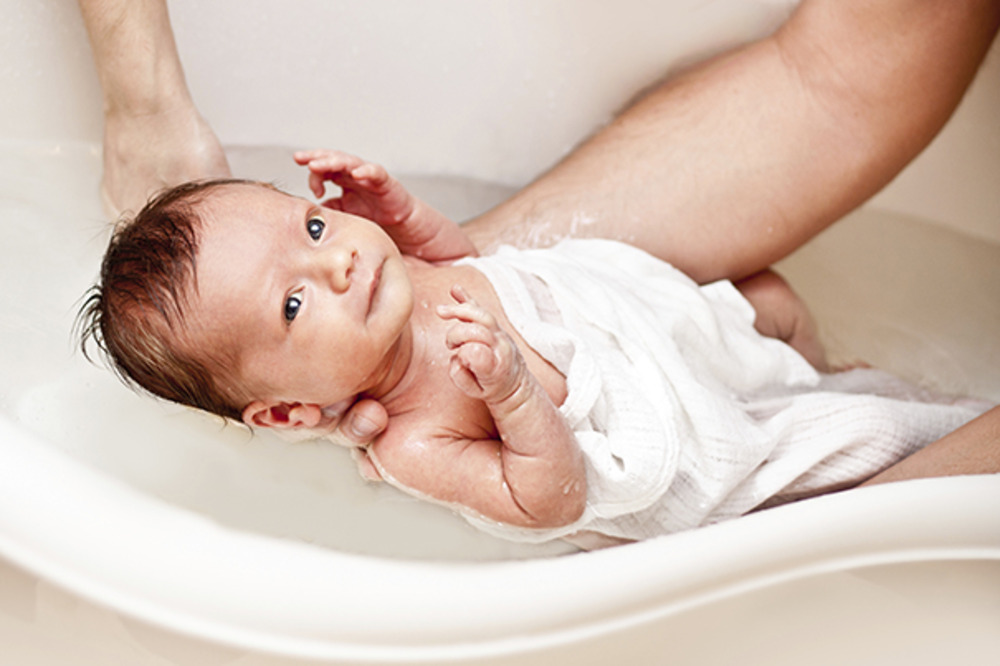
Bathing a newborn requires extra attention and care, especially in special circumstances. Whether your baby is a premature infant, has specific diaper area needs, or has a healing umbilical cord, here are some important considerations for their bathing routine:
Premature Infants
Premature infants have delicate skin and may require special bathing considerations. To ensure their comfort and safety, follow these tips:
- Consult with your healthcare provider
Due to their unique needs, premature infants may have specific bathing recommendations from their healthcare provider.
- Sponge baths
In the early days, it’s common to give premature infants sponge baths until their skin becomes more mature and their body temperature stabilizes.
- Use a gentle touch
Handle your premature infant gently, supporting their head and neck during bath time.
- Avoid drafts and temperature fluctuations
Newborns, especially premature infants, are more susceptible to temperature changes. Keep the bathing environment warm and draft-free.
Diaper Area Care
Proper care of the diaper area is crucial to maintain your baby’s hygiene and prevent discomfort. Consider the following:
- Cleanse with water
During diaper changes, use warm water and a soft cloth or baby wipe to cleanse the diaper area gently.
- Pat dry
After cleansing, ensure that the area is thoroughly dried. Pat the skin gently instead of rubbing to avoid further irritation.
- Apply a diaper cream
If your baby’s skin is prone to irritation or has a diaper rash, consider using a pediatrician-approved diaper cream to provide a protective barrier and soothing relief.
Bathing with a Healing Umbilical Cord
Until the umbilical cord stump falls off, special care is needed during bath time. Follow these guidelines:
- Sponge baths
During the healing process, it’s best to give your baby sponge baths instead of submerging them fully in water.
- Keep the area clean and dry
Gently cleanse the area around the umbilical cord stump using warm water and a soft cloth. Pat the area dry afterward to prevent moisture buildup.
- Follow your healthcare provider’s instructions
Your healthcare provider may have specific guidelines for caring for the umbilical cord stump. Follow their recommendations closely to ensure proper healing.
Remember, always consult with your healthcare provider or pediatrician when dealing with special circumstances related to your baby’s bathing routine. They can provide personalized guidance based on your baby’s individual needs.
Creating Your Own Routine
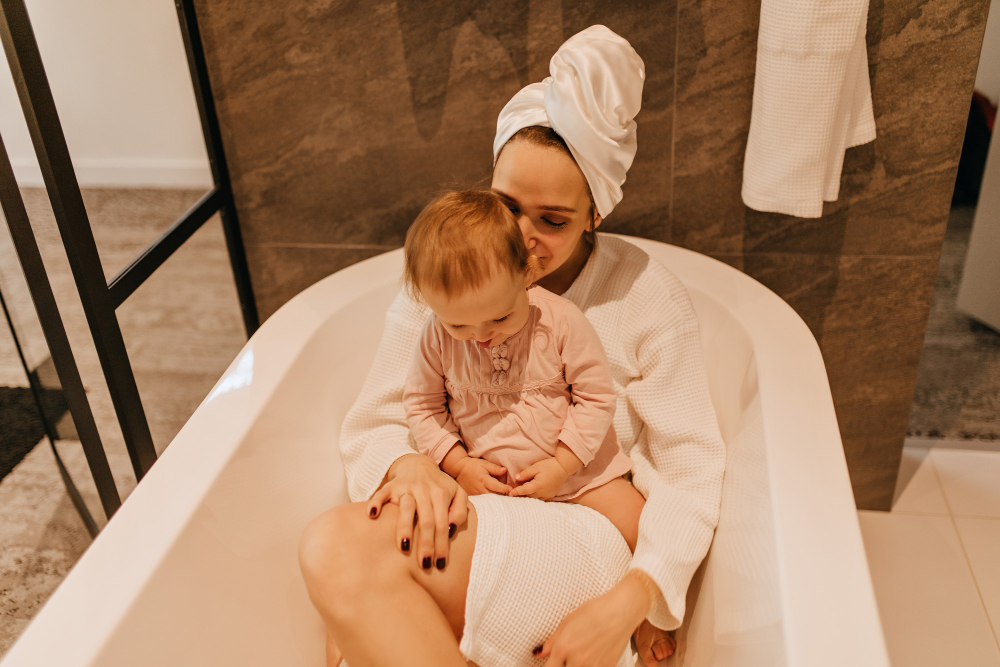
Establishing a personalized bathing routine for your newborn is essential for their hygiene and skin health and also a great opportunity for bonding and relaxation.
Here are some helpful tips on how parents can create a bathing routine that suits their family’s lifestyle and takes into account their baby’s unique needs.
Consider Your Baby’s Age and Development
- The frequency and duration of your baby’s baths may vary depending on their age and developmental stage.
- Newborns typically require less frequent baths, starting with sponge baths in the first few weeks and gradually transitioning to full baths as they grow.
- As your baby becomes more active and mobile, baths may become a daily or every other day routine.
Observe Your Baby’s Preferences
- Pay close attention to how your baby responds to bath time.
- Some babies love the water and find baths relaxing, while others may become irritable or anxious during the process.
- Adjust the bathing routine based on your baby’s cues and preferences.
- For example, if your baby is more comfortable with a quick bath rather than a longer one, keep the bathing time shorter to minimize stress.
Focus on Safety
- Always prioritize your baby’s safety during bath time.
- Use a baby bath seat or support to keep your little one secure and prevent them from slipping.
- Using a bath thermometer or checking the water with your elbow or wrist will ensure that the water temperature is suitable for your baby’s delicate skin.
- Additionally, never leave your baby unattended during a bath, even for a moment.
Choose the Right Bath Products
- Select gentle baby bath products specifically formulated for newborns.
- Avoid using harsh soaps or shampoos that can strip the baby’s skin of its natural oils.
- Opt for chemical-free and fragrance-free options to reduce the risk of irritation or allergic reactions.
- Remember, less is more when it comes to using products on your baby’s sensitive skin.
Make Bath Time Fun and Relaxing
- Create a soothing and enjoyable atmosphere during bath time to make it a positive experience for both you and your baby.
- Use soft music, dim lighting, and warm towels to create a cozy ambiance.
- Sing songs or engage in gentle play to keep your baby entertained and distracted if they become fussy.
- Make bath time a time for bonding and closeness, providing comfort and relaxation for your little one.
Be Flexible and Adapt
- It’s important to remember that every baby is different, and what works for one may not work for another.
- Be open to adjusting your bathing routine as your baby’s needs change.
- Don’t hesitate to seek advice from healthcare professionals or other experienced parents if you face any challenges or have concerns.
Creating your own bathing routine allows you to tailor the experience to your baby’s unique needs and your family’s lifestyle. By following these guidelines and being attentive to your baby’s cues, you can create a safe, enjoyable, and personalized bathing routine that nurtures healthy skin, hygiene, and bonding.
Insights from Pediatrics: How Often to Bathe Newborn
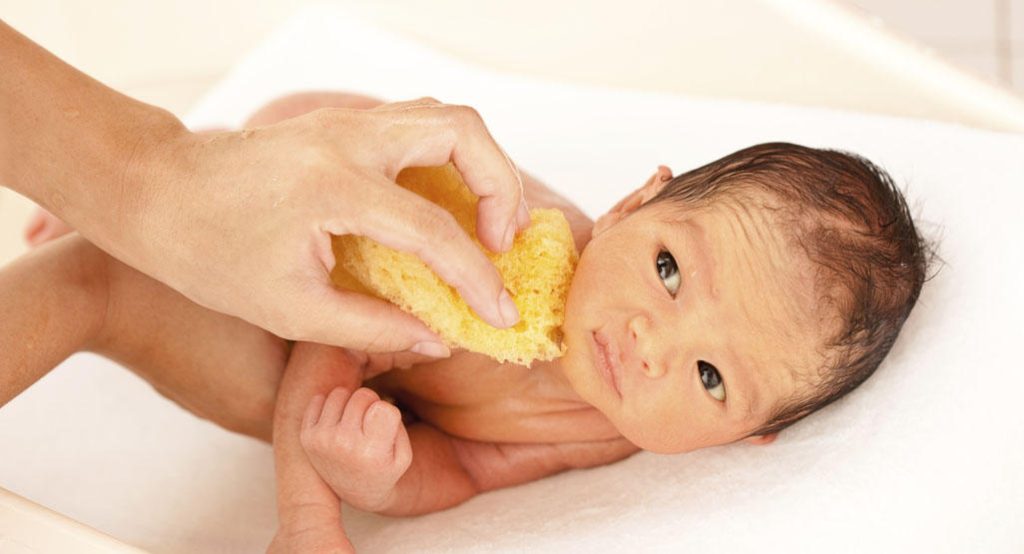
When it comes to newborn bathing routines and best practices, the Pediatrics department offers valuable insights that can help new parents navigate this important aspect of their baby’s care.
Here are some key recommendations from the experts:
Gradual Introduction of Full Baths
- In the first couple of weeks of life, it is generally recommended that newborns start with sponge baths to ensure a gentle and safe bathing experience.
- This allows the baby’s skin to adjust gradually to the water and helps maintain their body temperature.
- As the baby grows and develops, you can transition to giving them their first full bath.
- This process ensures that both you and your baby become more comfortable with regular bathing.
Temperature Regulation
- One important factor to consider during baby baths is water temperature.
- Newborns have a more sensitive skin barrier, and maintaining the right water temperature is crucial to prevent discomfort or injury.
- The water should be warm, around 37 degrees Celsius (98.6 degrees Fahrenheit), similar to the baby’s body temperature.
- Always use your elbow or a trusted bath thermometer to check the water temperature before placing the baby in the bath.
Gentle Cleansers and Moisturizers
- To prevent dry skin and further skin irritation, it is essential to choose gentle baby cleansers and moisturizers.
- To minimize the risk of skin reactions, opt for mild, chemical-free soap or cleansers specifically formulated for newborns.
- Additionally, applying a fragrance-free, hypoallergenic moisturizer after bath time can help lock in moisture and keep the baby’s skin soft and supple.
Safe Bathing Practices
- Ensuring the safety of your baby during baths is of utmost importance.
- Always remember to keep a close eye on your baby and never leave them unattended, not even for a moment.
- Make sure the water depth is appropriate, usually around two to three inches, and use a reliable baby bath seat or support to keep the baby secure and comfortable.
- Additionally, pay attention to your baby’s cues and preferences during bath time to make it an enjoyable bonding experience for both of you.
By following the expert recommendations on how often to bathe newborn from Pediatrics, you can establish a safe and nurturing bathing routine for your newborn. Remember, each baby is unique, so adjusting the routine to their needs is crucial.
With time and practice, bathing will become a cherished part of your daily bonding experience, promoting optimal hygiene and skin health for your little one.



